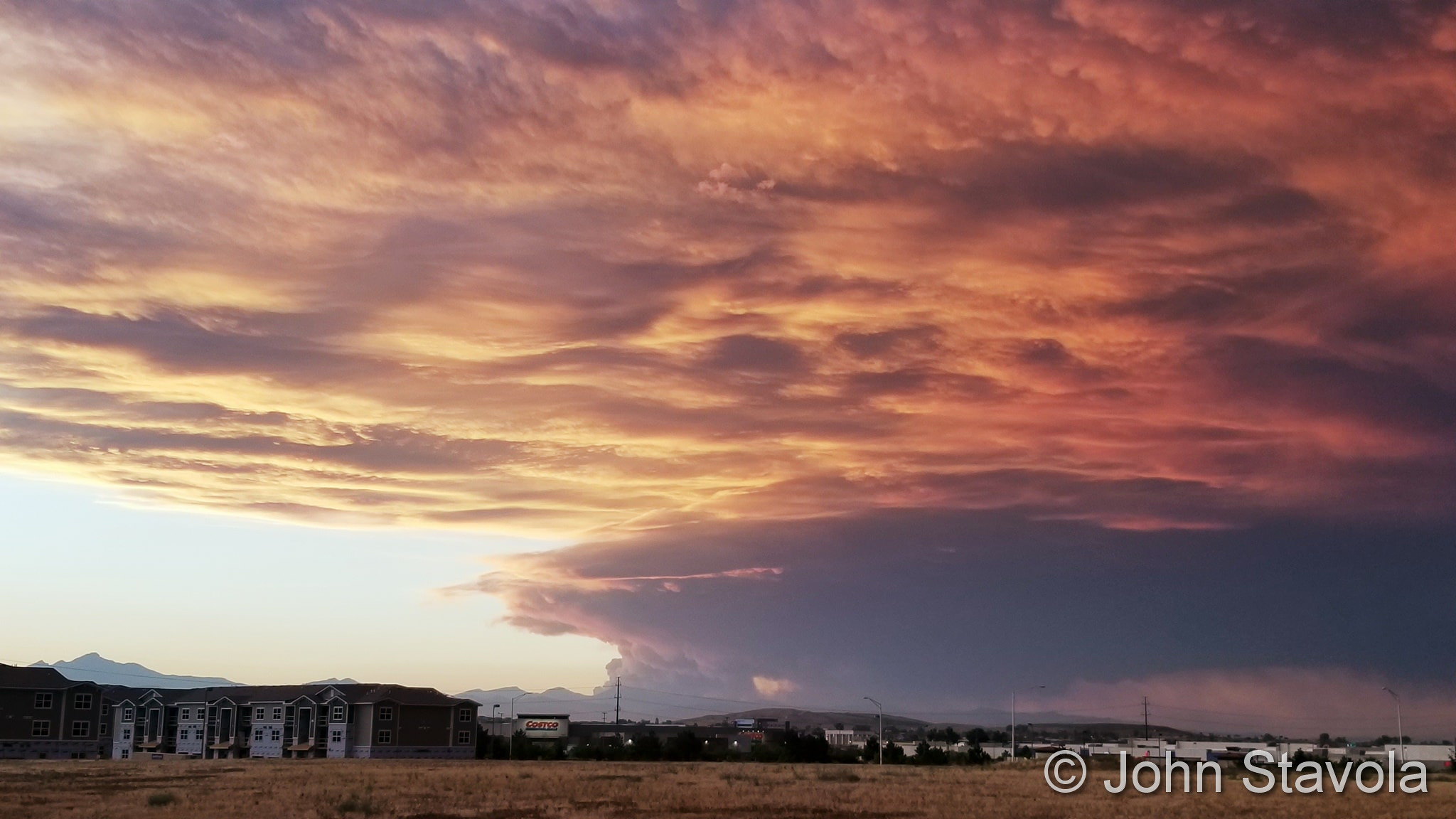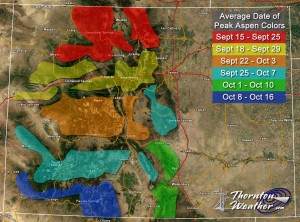Denver has been graced with an unusually mild September this year. That however is not always the case and in fact the weather can be downright winterish as we see in our look back at this week in Denver weather history.
25-26
In 1908…apparent post-frontal rain changed to snow overnight and totaled 6.5 inches in downtown Denver. This was the first snow of the season. Precipitation totaled 0.76 inch. North winds were sustained to 39 mph on the 25th.
25-27
In 1996…an early season snowstorm brought heavy snow to the Front Range eastern foothills. Snowfall totals included: 8 to 12 inches around conifer…7 inches on Floyd Hill…and 6 inches at both Bailey and Chief Hosa. Snowfall totaled only 4.7 inches at the site of the former Stapleton International Airport. This was the first measurable snow of the season. After the passage of a strong cold front…north winds gusted to 38 mph at Denver International Airport on the 25th.
26
In 1907…a late afternoon thunderstorm produced hail…0.23 inch of precipitation…and north winds sustained to 24 mph.
In 1927…snowfall of 1.7 inches…mixed at times with sleet… Was the first measurable snowfall of the season.
In 2012…a man was seriously injured when he was struck by lightning outside the Hebrew Educational Alliance as he and his family were getting in their car. The victim stopped breathing but was saved when his wife performed cardiopulmonary resuscitation on him immediately following the lightning strike. He suffered burns to 15 percent of his body which included his legs…chest… abdomen and neck. Lightning also caused 48 outages in Denver which affected 6582 Xcel Energy customers.
26-28
In 1936…the heaviest snowfall ever recorded in September and the heaviest snowfall ever recorded so early in the season dumped a total of 16.5 inches of snow on downtown Denver and 21.3 inches at Denver municipal airport. The 15.0 inches of snow measured from 6:00 pm on the 27th to 6:00 pm on the 28th is the greatest 24 hour snowfall ever recorded in September. This was the first snow of the season. The snow was intermittent through the 26th…but continuous from early afternoon on the 27th to around midnight on the 28th…except for a period of rain during the afternoon of the 28th which contributed to a loss of depth on the ground. The greatest snow depth on the ground downtown was 13 inches with 8 inches at Denver municipal airport. There were no high winds with the storm and traffic was interrupted for only a short period. The storm produced property damage estimated at 7 million dollars. With trees and shrubs in full foliage…the leaves caught and held the heavy water-laden snow…until the branches snapped from the weight. More than 3000 workmen were called to remove the debris and snow from the city. The city firemen who were off duty…as well as all the reserves… Were asked to report to their stations. All schools in the city remained open…but attendance was only 50 percent of normal. Grade school students were sent home at noon on the 28th. The early storm caught stockmen with many cattle still in higher ranges. Warm weather followed the snow…which had all melted by the end of the month…except for a few inches in sheltered places.
27
In 1877…smoke from heavy forest fires in the mountains spread over the city on upper wind currents.
In 1935…the first snow of the season was 2.8 inches in downtown Denver. The low temperature dipped to 31 degrees for the first freeze of the season.
27-28
In 1984…heavy snow fell over the plains and foothills. Snowfall amounts ranged from 2 to 5 inches on the plains with up to a foot at higher elevations in the foothills. The main problem caused by the storm was thousands of power outages caused by snow-laden tree limbs snapping and falling onto power lines. Over 15 thousand homes lost power in metro Denver. Some cars were damaged by falling trees and limbs. The snow also caused some flight delays at Stapleton International Airport where 5.1 inches of snow fell and northeast winds gusted to 29 mph. Maximum snow depth on the ground was 3 inches due to melting. The high temperature of only 34 degrees on the 28th was a record low maximum for the date and equaled the all-time record for the month at that time.
28
In 1877…heavy dense smoke from mountain forest fires spread over the city. The smoke was so dense that it obscured the sun at times.
In 1921…post-frontal northeast winds were sustained to 44 mph.
In 1953…a pacific cold front produced a west wind gust to 59 mph at Stapleton Airport where the visibility was briefly reduced to 3/4 miles in blowing dust. Strong winds were also widespread over Boulder during the afternoon.
In 1960…strong…gusty winds tore the roof from 6 units of a motel on west Colfax Avenue in Denver. The roofing sailed over the building and crashed down on a truck…wrecking it. The strong winds were the result of an apparent microburst.
In 1999…snow fell in the foothills west of metro Denver and over the plains. Snowfall totals included 7 inches at conifer. At the site of the former Stapleton International Airport…3.1 inches of snow were measured. This was the first snow of the season. The heavy wet snow snapped branches from fully leafed trees…downing power lines and causing scattered outages.
In 2004…severe thunderstorms produced hail to 3/4 inch in diameter in Littleton and in Douglas County 14 miles northwest of Castle Rock.
In 2012…a weak tornado (EF-0) tornado touched down near Strasburg. No damage was reported.
Continue reading September 26 to October 2: This week in Denver weather history


 Following an August that was unseasonably warm and dry, we find ourselves heading into September hoping for relief. The month can bring plenty of rain and even our first snow of the season but more often than not, it is one of the most pleasant along the Colorado Front Range.
Following an August that was unseasonably warm and dry, we find ourselves heading into September hoping for relief. The month can bring plenty of rain and even our first snow of the season but more often than not, it is one of the most pleasant along the Colorado Front Range.

